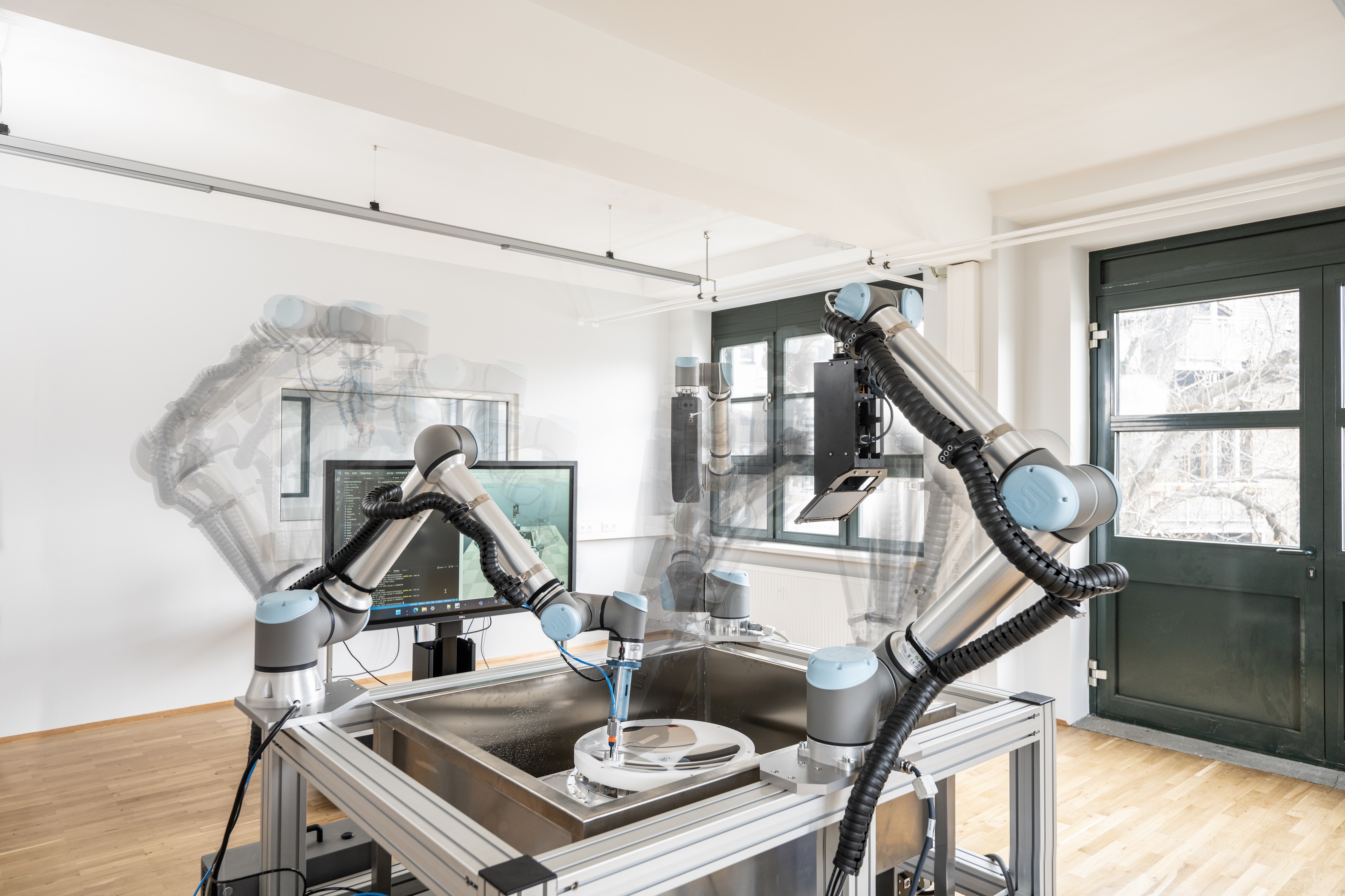New production architecture SWAP-IT enables efficient and scalable adaptation of manufacturing processes
High-precision mirror manufacturing down to the nanometer with 30% less production time
Researchers at the Fraunhofer Institute for Applied Optics and Precision Engineering IOF have found a new way to produce high-precision components such as mirror optics in a particularly efficient and scalable manner - while maintaining the highest quality and low costs. To achieve this, they are using a new type of production architecture: SWAP-IT. This is being developed as part of the Fraunhofer SWAP lead project with the aim of making industrial manufacturing processes in the factory of the future more flexible, efficient, and economical. At the Hannover Messe from April 17 to 21, the lead project will be presented with its diverse application possibilities in high-precision mirror manufacturing, among other areas.
Traditionally, high-precision components such as mirror optics are mass-produced in a time-intensive and manufactory-like process and then individually characterized using complex measurement technology. But the demand for such components is growing steadily. With conventional manufacturing processes, this leads to enormous machine costs, longer processing times, and limitations in the transition to high-quality serial components. Consequently, new manufacturing approaches are needed to meet the increased demand and at the same time enable economical as well as qualitatively excellent production with increasing requirements and high quantities.
Fraunhofer flagship project SWAP is addressing this challenge. Together, ten Fraunhofer institutes have realized a new production architecture here, the goal of which is to make production processes in the factory of the future more flexible and more individual while simultaneously achieving the highest quality and reduced costs. The name of the novel architecture: "SWAP-IT". It works with artificial intelligence and can be used in a wide variety of application areas, including high-precision mirror production.
Individually adaptable components with consistently high quality
Using SWAP-IT, researchers at Fraunhofer IOF have now developed an efficient and scalable way to manufacture high-precision mirror optics while maintaining the highest quality characteristics and low costs. By means of workload-optimized manufacturing, it is possible for the first time to decouple the scaling of the number of workpieces, size, and accuracy from the individual performance of the processing machines.
This involves combining various operating resources as well as additive and subtractive machining processes, functionalization, and characterization as well as measuring and handling processes, analyzing their workflow directly on site and thus, linking of multiple cooperating robot stations. The workspace of the novel machine environment is subdivided into smaller sub-segments, which enables the use of compact, precise, and economical processing stations.
As a result, individually adaptable components are manufactured efficiently and cost-effectively for both medium and large quantities with consistently high optical surface quality. This efficiency enables a reduction in manufacturing time of 30 percent per mirror, combined with an improvement in the quality characteristics of the mirror surface of up to a factor of two with simultaneous production of multiple mirrors and a resulting time saving by the factor »number of mirrors«. The high-precision, parallelized manufacturing solution opens up individual component sizes and surface accuracies in the micrometer to nanometer range, supported by the latest AI methods.
"SWAP – Hierarchical swarms as production architecture with optimized utilisation" © Fraunhofer IOF
SWAP lead project: Innovative production architecture for the factory of the future
Current crises and rising costs pose enormous challenges for the manufacturing industry. Companies are expected to routinely produce large quantities in top quality and quickly deliver individualized single products or small batches on demand. Classical production environments are not sufficiently equipped for these requirements due to typically rigid processes, even if they have been modernized in recent years - driven by digitalization.
Ten Fraunhofer institutes in the Fraunhofer Groups, Group for Production, Light & Surfaces and ICT are presenting a solution to this problem with the SWAP lead project. Behind the term SWAP is a concept for "Heterogeneous, workload-optimized robot teams and production architectures". The basic idea behind the "SWAP-IT" architecture solution based on this concept is to create a scalable cyber-physical production system that is very lean and can be flexibly applied to a wide variety of production processes.
Thanks to its modular structure, the SWAP-IT production architecture breaks up the static structures and schematic processes of classic production facilities and makes the work steps more flexible. A uniform and semantically simplified description language for machines, processes, and also products enables the integration of operating resources such as machines, robots or autonomous transport systems. The result is an intelligently acting and adaptable production environment. The partner institutes are currently working on four industry-relevant use cases in the context of manufacturing and automation to apply this architectural solution and demonstrate added value.
Demonstration at the Hanover Fair
The Fraunhofer lead project SWAP and its new production architecture will be presented at the Hannover Messe from April 17 to 21. The experts will present a series of hands-on demonstrations, including the production of optical precision components as well as processes for segmenting large components, assembly processes in aircraft manufacturing, and processes for logistics automation. The diverse demos are designed to show that the SWAP-IT architecture has been designed to cover a wide variety of application areas.
You will find the Fraunhofer booth in hall 16, booth A12.
Supplmentery Information
Further information on the Fraunhofer SWAP lead project can be found on the project website: Fraunhofer Lead Project SWAP
Please also note the accompanying press release of the Fraunhofer-Gesellschaft: SWAP-IT: Innovative production architecture for the factory of the future
